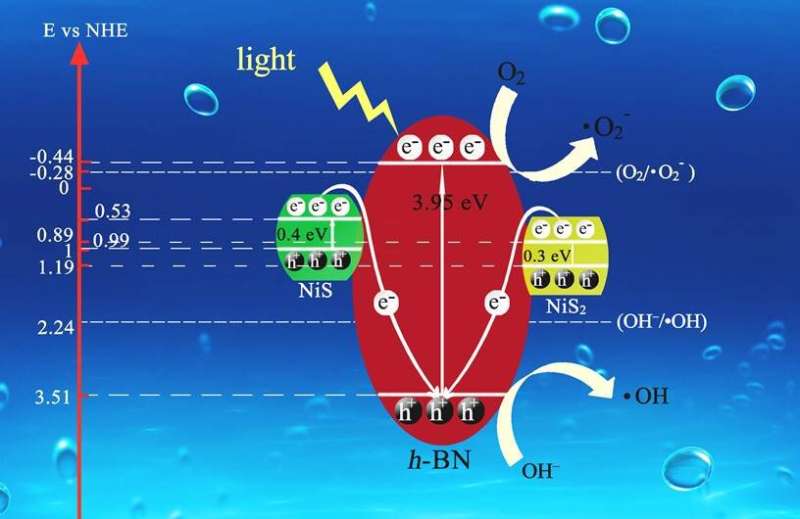h-BN/NiS2/NiS nanocatalysts for removing rhodamine B and Cr(VI) in wastewater

The human health is suffering from effluent containing heavy metal ions (such as Cr(VI)) and organic dyes (such as rhodamine B). Among numerous strategies to remove pollutants from water, photocatalysis has attracted extensive attention due to its low energy consumption, simple operation and environmental friendliness. Bimetallic sulfides are apt to form the heterointerfaces which is able to modify the surface properties of particles and enhance the stability and the photocatalytic performances. h-BN has been proved to be a prospective support for different composites because of its diversified sheet structure, higher surface area, chemical resistance, can effectively increase the accessible superficial area of loaded catalysts and supply abundant active sites.
Jianliang Cao, a professor comes from College of Chemistry and Chemical Engineering of Henan Polytechnic University, and co-workers fabricated the ternary catalysts of h-BN nanosheets supported NiS2 and NiS nanocrystals, which was published online in Frontiers of Chemical Science and Engineering on October 11, 2021.
"The interesting thing about this work is, the h-BN/NiS2/NiS composite is able to fully combine the advantages of both h-BN and bimetallic sulfides." Prof. Cao said. "The addition of h-BN may lead to uniform dispersion of NiS2/NiS nanocrystals, increase the specific surface area of the material and enhance its absorption of light."
In this study, the researchers first investigated the composition, crystal structure, morphology and so on to demonstrate the successful synthesis of h-BN/NiS2/NiS ternary composite with a double Z-scheme heterojunction. Then the photocatalytic performance of the composites for the target pollutants in solution was investigated. The results showed that 7% h-BN/NiS2/NiS photocatalyst could eliminate about 98.5% of Cr(VI), and the degradation efficiency of 7% h-BN/NiS2/NiS for rhodamine B reached over 80%.
"Due to synergistic effect, strong interactions exist in the composites, which achieve higher activity and cycling stability." Said Huoli Zhang, the co-corresponding author of this study "This work offers a viable reference to develop a stably effective photocatalytic material in purifying wastewater."
More information: Wei Wang et al, Graphene-like h-BN supported polyhedral NiS2/NiS nanocrystals with excellent photocatalytic performance for removing rhodamine B and Cr(VI), Frontiers of Chemical Science and Engineering (2021). DOI: 10.1007/s11705-021-2094-2
Provided by Higher Education Press





















